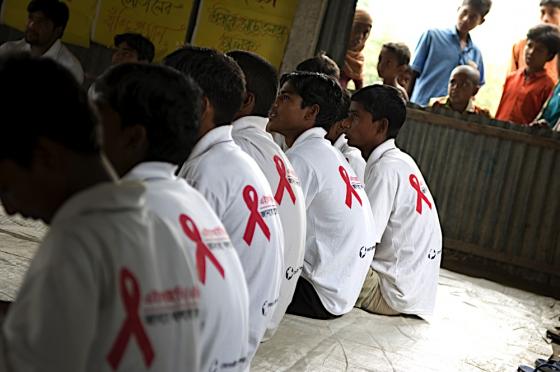

Photo by Melissa Engle.
World AIDS Day 2012 offered numerous personal stories in the global fight against HIV and AIDS, but perhaps the most intriguing story, however, was a policy one: How developing countries are making significant contributions to the fight against AIDS in their own countries. For the first time in the history of the disease, spending by recipient nations to combat AIDS has exceeded spending by donor nations like the United States. According to the Joint United Nations Programme on HIV/AIDS (UNAIDS), low and middle-income countries have doubled spending on AIDS to $8.6 billion, half a billion more than international funding.
Equally encouraging are recent numbers showing new HIV infections in 25 low- and middle-income countries have dropped by more than 50 percent, with sub-Saharan Africa representing over half of the nations reporting lower infection rates. That’s particularly good news for the United States, which accounts for roughly half of all of the international HIV assistance worldwide, and has focused on country ownership in sub-Saharan African nations struggling with rising infection rates.
Successful country ownership of development programs is seen as the key to sustainability, and it isn’t limited to AIDS relief. USAID has been encouraging country ownership in an array of other development fields with its Country Development Cooperation Strategies programs. These strategies, implemented in many of the same countries that have taken on the funding of AIDS relief, are five-year programs that work to ensure that development aid is used as a medium-term investment, not a long-term crutch.
The Millennium Challenge Corporation also embraces country ownership as a key principle in its compacts. In Jordan, by putting specific emphasis on capacity building, the MCC helped expand the largest water treatment plant, which will aid the growth of healthy crops and healthy children. In Mali, the MCC created irrigation systems, which will raise household incomes by $273 million over the next 20 years. These programs help developing nations help themselves, encouraging them to take leadership roles in their own country and eventually in the region.
While many aid recipient countries have begun to play a larger role in development, there is still much to accomplish in global health and beyond. Secretary Clinton unveiled the PEPFAR Blueprint: Creating an AIDS-Free Generation before World AIDS Day, which is slated to save the United States $39 million over four years while paying specific attention to shared responsibility and an eventual movement toward recipient nation leadership and management. As she said, “PEPFAR represents our very best values in practice,” and continued investment into development is crucial to both saving lives across the globe and building international partners which can become leaders to their people and neighbors.
World AIDS Day has begun to show the very real dividends of our global investments as we strive to build a better, safer world.